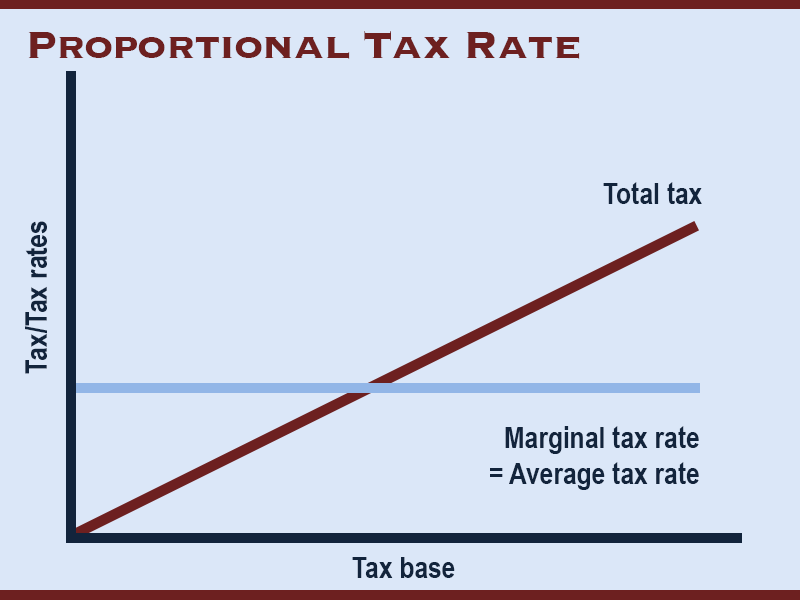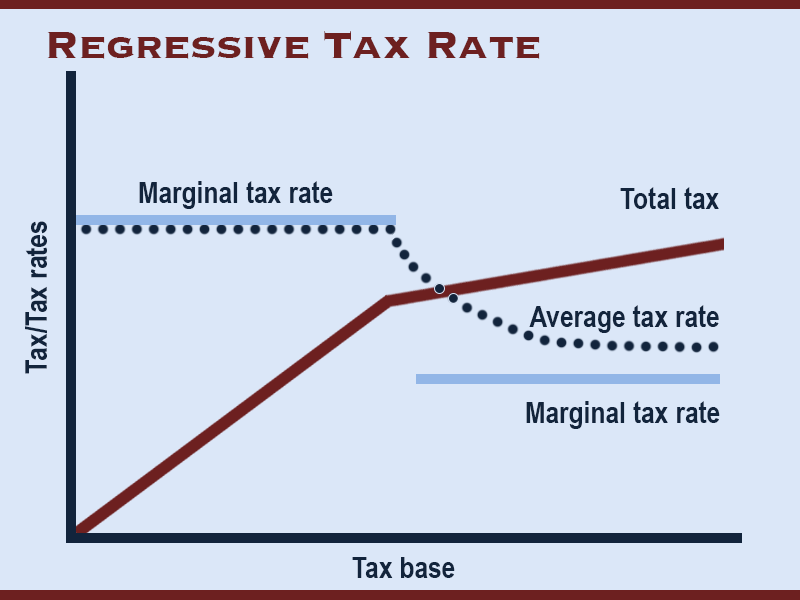
ACCTG310:
Lesson 1: An Introduction to Tax
Lesson 1 Introduction | Video
Course Introduction and Chapter 1 Overview
JODY SALSMAN: Hello. My name is Jody Salsman, and I am one of the professors on Accounting 310, Federal Taxation I. You will see that this is a basic introduction to federal taxation, and this class will mostly focus on the taxation of individuals. We will get into some business concepts that also apply to corporations. But for the most part in this class, we will focus on the individual taxation.
If you continue on to Accounting 410, which is an elective class in the accounting major, you will get much more in-depth into the different taxes for corporations, such as the C corporation, the S corporation, and partnerships. But this one, again, will focus mostly on individual taxation.
So this is going to be a little mini series of introduction videos. You will see it's not going to be an in-depth lecture style recording. It's just going to be an introduction to the chapter and the topics that will be in each of the chapters that we are going to go through.
You will see in Canvas that we do have a link there that you can contact us as a professor, whoever your instructor may be, on this course for the semester. You can reach us there, or you can reach us through your regular Penn State email. If you have any questions, need any help any homework help, or any conceptual problems, we're happy to help you there.
You'll also see that we do contract with Tutor.com. So if you are struggling in the class and you need some help outside of what Penn State has for you, we also do contract with Tutor.com. And you're welcome to use their services as well.
You'll see in the syllabus, we do have several topics that we will cover in this class. So we will have a little mini introduction for each concept. And if we find that there are several students that have a problem with a particular concept, we can always do a recording and get more in depth with those concepts there.
So we are very excited to have you for the semester. We look forward to communicating with you and teaching you about taxes. So if you have any questions, please reach out and we're happy to help. Have a great semester.
JODY M. SALSMAN: We are going to go ahead and get started now. We are in our first unit here, which is going to be the introduction to tax. And coincidentally, our first chapter is also called "An Introduction to Tax." So the first chapter here is going to be an overview of some main concepts of tax. So who cares about taxes, what qualifies as a tax, and then we'll get into some other concepts here.
So why do we need to learn about taxes, first of all? So in order to make some informed decisions regarding our personal finances, our investments, some business decisions, political decisions, it's very helpful to have a basic understanding of taxation. So that's why we are going to study the concept of tax. And then we want to get into, OK, so what then qualifies as a tax? So why do we have taxes?
They are so that we can run some governmental programs. And what then is going to qualify as a tax? So we have different types, such as income tax. We have sales tax, we have property taxes. There's a whole slew of different types of taxes that we can get into.
You'll be able to classify them as federal, state, and local as well. You want to be able to identify those different types. And then we're also going to get into a concept of the tax rate structures.
So you'll see that there are some tax rate structures. There's three different types. We will get into those in this chapter. And you'll want to be able to describe those so that we can calculate a tax.
So one of the concepts that past students have had some trouble with in this class is the concept of marginal, average, and effective tax rates. So there's those three different tax rates. And we want you to be able to identify the differences between them and also to calculate them.
So you may have heard the concept of the tax bracket. So what does the tax bracket mean? That means, what is the tax rate that you are being charged?
So when you see the tax table, you will see what the rate is that your income falls into. And that is going to be considered your marginal tax rate. So that's the percentage of tax on the next dollar made.
Then we get into average tax. So what is the average tax rate? The average tax rate is the amount of tax that you owe divided by your taxable income. So how much of your income is taxable?
You'll want to take your tax owed divided by that taxable income amount. So this is going to be less than your marginal tax rate because not all income is taxed at that highest marginal tax rate. You'll see, with the tax table, that some of your income is taxed at the lower rates. And we'll get into this concept more in chapter 4. And you will see that we have a video there that will show you how to use that tax table and show you exactly how to calculate what the tax should be.
So that would be the average tax rate, the amount of tax owed divided by the taxable income. And then we have the effective tax rate. So this may be equal to your average tax, or it may be less if you have some tax exempt income. So the effective tax rate is going to be your tax owed divided by your taxable plus your non-taxable or tax exempt income. So if you have some tax exempt income, this effective rate is going to be even lower than your average tax rate.
So there's the marginal, the average, and the effective. There is a practice problem in this chapter here so that you can try these concepts on your own. And then you'll see that at the end of the chapter, we talk about evaluating some alternate tax systems. So if you would be in governmental accounting or work at the IRS, you may be in charge of trying to decide what type of tax to impose and evaluating different tax systems.
So we want you to just be able to see how these concepts are implemented and what our government goes through in order to implement a tax system. So if you have any questions, please reach out to us. That's what we're here for. We're happy to help you. And go ahead and begin on chapter 1. Have a great day.
Learning Objectives
After completing this lesson, you should be able to
- demonstrate how taxes influence basic business, investment, personal, and political decisions;
- discuss what constitutes a tax and the general objectives of taxation;
- describe the three basic tax rate structures and calculate a tax;
- identify the various federal, state, and local taxes; and
- apply appropriate criteria to evaluate alternative tax systems.
Lesson 1 Readings and Activities
By the end of this lesson, make sure you have completed the readings and activities found in the Lesson 1 Course Schedule.
Who Cares About Taxes and Why?
Individuals, businesses, and government agencies care about taxes for a variety of reasons.
Individuals

Understanding taxes can help individuals (you!) make informed decisions in many daily aspects of life. For example,
- owning a home vs. renting,
- saving for retirement or education,
- investing in stocks and bonds,
- evaluating job offers,
- planning for a family, or
- arranging for gifts and estates.
Businesses

Businesses may also make several decisions based upon the tax consequences; therefore, it is important for them to understand how taxation may affect
- organization form (corporation, partnership, sole proprietorship),
- location,
- purchasing vs. leasing buildings and equipment,
- financing with debt vs. equity,
- compensating employees (hiring vs. contracting),
- distributing business profits, and
- acquisition alternatives.
Government Agencies

Government agencies implement tax systems. When setting these systems in place or when making changes, legislators must consider who, what, when, where, why, and how much to tax. Additionally, they need to consider how the tax may affect political candidacy.
What Qualifies as a Tax?

Taxes are the price we pay for civilized society.
The three main characteristics that all taxes share is that they are mandatory, imposed by the government, and not directly linked to a specific taxpayer benefit.
Mandatory
These are required by law and are not voluntarily paid.
Imposed by the Government
Governments (federal, state, and local) impose taxes to raise revenue for operations and programs that they provide.
Independent of Taxpayer Benefits
Taxes paid by the taxpayer have no direct link to any particular benefit received by the taxpayer. For example, taxpayers will receive the benefits of national defense by our federal government regardless of their payment of taxes. Table 1.1 shows examples of tax programs by governmental level.
| Governmental Level | Programs Taxes Pay For |
|---|---|
| Federal |
National defense Judicial system Social programs
Interstate highways |
| State |
Law enforcement Public schools Low-income assistance Unemployment Environmental programs Road maintenance |
| Local |
Police and fire departments Education Libraries Special projects |
History of the Income Tax in the United States
The U.S. Constitution (Article I, Section 9), as originally written, actually prohibits an income tax. It says, "No Capitation, or other direct, Tax shall be laid unless in Proportion to the Census" (U.S. Const. art. I, § 9). In other words, taxes were to be in proportion to the population, not income. So, if New York had 10% of the population, their citizens should pay 10% of the taxes. Despite this prohibition, Congress did impose an income tax.
Please scroll through Figure 1.1 below to view a timeline of the history of income tax in the United States.
Types of Taxes
There are many different types of taxes levied at the federal, state, and local levels.
Can You Identify a Federal, State, or Local Tax?
There are six federal, state, and local individual taxes, and there are five federal, state, and local business taxes. Table 1.3 is blank. Please attempt to complete the table on your own by identifying all of the federal, state, and local taxes you can think of for both individuals and businesses.
| Individual | Business |
|---|---|
Once you have attempted Table 1.3, select the button below to show the completed table.
Choosing a Type of Tax to Impose
The following are characteristics of a “good” tax (from Adam Smith’s Wealth of Nations, published in 1776).
Certainty
Taxpayers should know when a tax will be imposed, how it will be imposed, and the amount of the tax.
Convenience
It should be easy (convenient) for taxpayers to pay taxes. Convenience is the argument given for income and employment taxes being withheld from taxpayers’ paychecks and for quarterly estimated payments of taxes when needed. Paying in these ways is more convenient for the taxpayer than waiting until the annual tax return is completed and paying the entire amount of taxes at one time.
Economy
Based on Adam Smith's model of economics, the costs of administration of a tax system should be minimal and efficient for both the tax collecting agency (IRS) and the taxpayer. In other words, a tax system should not cost a lot of money to implement, collect, or enforce tax laws for either the IRS or the taxpayer, and it should be easy for the taxpayer to understand and pay taxes owed.
Equity
A tax should be based on a taxpayer’s ability to pay. This is usually an income-based decision, though other factors can apply. These equality considerations are captured in two concepts—horizontal equity and vertical equity.
Horizontal Equity


Taxpayers who are situated similarly should pay similar taxes. For example, if we look at two households that are next-door neighbors, and each consists of a married couple with two children and similar household incomes, then those two households should pay a similar amount of taxes. If that is the case (i.e., the two households pay a similar amount of taxes), then there is horizontal equity. If it does not hold true (i.e., they pay dissimilar amounts of taxes), then there is horizontal inequity.
Vertical Equity

Taxpayers who are not situated similarly should not pay similar taxes. For example, if we look at two households that are next-door neighbors, and each consists of a married couple with two children, but one household earns $200,000 per year while the other household earns $100,000 per year, then the household with the higher income should pay more taxes than the lower income household (ideally twice as much, based on the amounts of income). If that is the case (i.e., that the higher earning household pays about twice as much in taxes), then there is vertical equity. If it does not hold true, then there is vertical inequity.
Vertical Equity: Progressive, Proportional, or Regressive
You will often hear politicians and policymakers describe taxes as progressive, proportional, or regressive, which describe the vertical equity of a tax.

Progressive Tax
A progressive tax (Figure 1.2) is one in which higher income taxpayers pay a higher percentage of their income than do lower income taxpayers. This is the justification used for our current individual income tax rates, which (for 2022) start at 10% for the lowest income taxpayers and rise to 37% for the highest income taxpayers.

Proportional Tax
A proportional tax (Figure 1.3) is one in which higher income taxpayers pay the same percentage of their income as lower income taxpayers. Some examples of this are the corporate tax rate (21% in 2022) and sales tax.

Regressive Tax
A regressive tax (Figure 1.4) is one in which higher income taxpayers pay a lower percentage of their income than do lower income taxpayers. An example of this is the social security tax, which is only imposed on earned incomes up to $147,000 (the 2022 amount). Any earnings above that amount pay zero social security tax, and interest and dividends, which are mostly earned by higher income taxpayers, are not subject to this tax.
Evaluating Tax Systems

Those who implement the tax systems, as well as taxpayers, often use criteria to evaluate the system.
Sufficiency
Sufficiency refers to if the tax system is actually generating the amount of revenue that it was expected or budgeted to. Although revenues and expenditures of the government can be difficult to estimate, it is important that the revenue is generated to continue to fund the programs. Although governments do their best to predict this, some unforeseen circumstances, such as wars, natural disasters, pandemics, and economic events can greatly affect the amount of revenue generated by taxes or the expenditures needed to aid in these events.
Static vs. Dynamic Forecasting
There are two approaches to forecasting—static or dynamic.
- Static forecasting ignores any new information and projects based upon current information. That is, this method does not account for any taxpayer changes.
- Dynamic forecasting, however, attempt to account for taxpayer responses to changes. Although these predictions may be inaccurate, it is useful to attempt to identify these responses. These projections, though, are only as accurate as the correctness of the assumptions made.
Income vs. Substitution Effects
It is difficult to predict a taxpayer’s reaction to tax increases as it will depend on each individual’s preferences. Forecasters and legislators will assume either an income effect or a substitution effect.
- The income effect predicts that taxpayers will attempt to make the same after-tax amount even with a tax increase by working more.
- The substitution effect predicts that taxpayers will spend less on taxable activities when there is a tax increase to make up for the lower after-tax income. For example, they may do more entertaining at home instead of going out for dinner or to the movies.
The Trade-Offs
When implementing a tax system, there is generally a trade-off between simplicity and fairness. Tax systems that have ease of administration (for example, flat rate tax) generally are most criticized for fairness (not based on ability to pay). The systems that are more complex to administer (for example, graduated tax) are generally seen as most fair by taxpayers. The implementing agencies must determine which they are willing to compromise based on their resources available.
Using the IRAC Method and Bluebooking in Memos and Discussions | Videos
Please review and learn about the IRAC method and bluebooking for use in both your online discussions and your memos. Where applicable, students need to substantiate their thoughts or opinions in the online discussions in lieu of just a general opinion or thought without something to substantiate it. Below you will find references and sites that illustrate how to accomplish these two objectives.
IRAC Method
The IRAC method is the standard in the business world as far as discussions in memorandums and should be used as a basis for your online discussion. Read How to Brief a Case Using the "IRAC" Method and watch the following videos for details on this method.
Introduction to IRAC
How to IRAC a Law Case
Bluebooking
Bluebooking is the preferred method for citing memorandums and should also be used as a basis for your online discussions.
Bluebooking Series Part I An Introduction to the Basics
Bluebook Lesson 1 - 19th Edition
Lesson 1 Summary
In this lesson, we were introduced to the concept of taxation including what qualifies as a tax, the history of taxation, and types of taxes. We also were able to practice calculating marginal, average, and effective tax rates. Finally, we analyzed how to evaluate tax systems.
References
Compania General de Tabacos de Filipinas v. Collector of Internal, 275 U.S. 87 (1927). Retrieved from http://caselaw.lp.findlaw.com/cgi-bin/getcase.pl?court=us&vol=275&invol=87
U.S. Const. art. I, § 9.